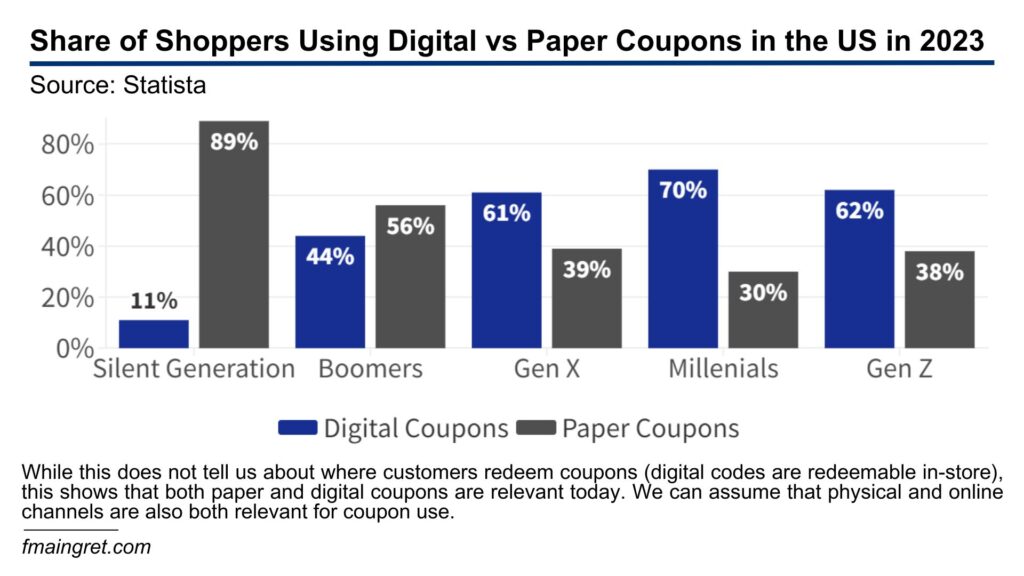Not too long ago, omnichannel was the center of attention in the ecommerce world, before AI and new sales channels became a thing. However, a solid omnichannel strategy is still important for retailers and is expected from shoppers who seek a consistent brand experience. According to a recent PYMNTS Intelligence study, 75% of U.S. shoppers expect digital coupons to be available for both in-store and online shopping.
Coupons are a very flexible tool and a great way to influence customers’ decisions. There are many reasons why brands would use them. Coupons can increase sales, help clear out inventory, acquire new-to-brand customers, and more. But one way some brands use them is to drive traffic to their retail stores.

While online shopping is more popular than ever, the physical store remains a crucial touchpoint for customers. Omnichannel coupons act as a bridge, encouraging customers to visit brick-and-mortar locations, where they often end up spending more than initially planned, driven by the employees, the physical contact with the products, and the immediacy of the shopping experience. Several studies have shown that consumers tend to spend more per visit in-store rather than online. Other customers are more likely to buy online once they have seen and experienced the product in-store.
The expectation for coupons that function both in-store and online may seem reasonable to customers. For brands, omnichannel coupons could be a goldmine for collecting valuable customer data. Through these coupons, retailers can gain insights into customer preferences, purchasing behaviors, and channel preferences.
However, this can be very difficult to do in practice. The dynamics of in-store and online shopping differ significantly. There are physical constraints, such as limited space. Many brands have a broader selection of products online. This does not impact generic coupons (for example, 10% off on any order) but makes it impossible to target any item. Then, cost structures are vastly different across sales channels. For example, shipping and order fulfillment can be a large expense, especially if the brand offers free shipping. The cost of reverse logistics is also high, especially in industries with high return rates like the fashion industry (Customers can try the clothes in stores, but some customers order multiple sizes online and return what does not fit).
Coupons are more than just discounts. They are important tools for retailers, can be easily shared online by brands and influencers, are very flexible, and are helpful in collecting data. However, despite the importance of omnichannel, there are still major differences between stores and online channels that make it difficult to offer coupons that work both in-store and online. As of now, I only see it possible for a very small minority of retailers, but I would be interested to know if my readers have ideas to provide a better shopping experience despite these constraints.
2024 Global Digital Shopping Index – February 2024
